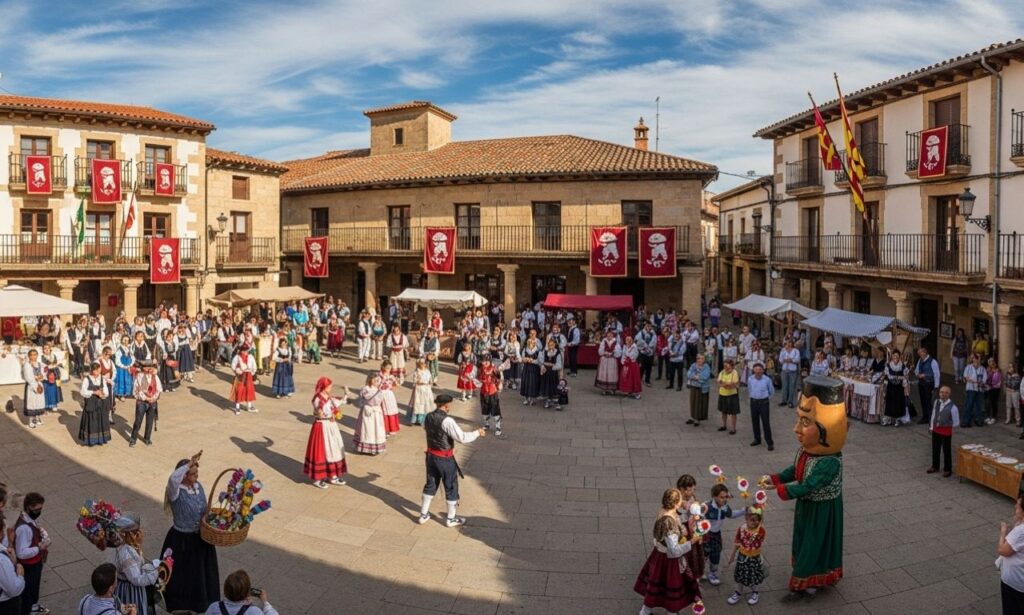In the vibrant tapestry of cultural traditions, few threads are as rich and colorful as those woven by the Ciulioneros. This unique group celebrates a heritage filled with lively festivals, heartfelt customs, and timeless meanings that resonate through generations. With roots deeply planted in history yet branches stretching towards modernity, exploring what it means to be a Ciulionero reveals much about community spirit and identity. Join us on this fascinating journey into their world—a place where every festival tells a story and each custom carries significance that echoes today. Whether you’re familiar with their traditions or just discovering them for the first time, there’s always something new to learn about these captivating celebrations and their impact on contemporary life.
What is Ciulioneros?
Ciulioneros refers to a vibrant cultural tradition that celebrates community, heritage, and creativity. It is deeply rooted in the customs of specific regions where it thrives.
At its core, ciulioneros embodies the spirit of togetherness. Participants often engage in lively gatherings filled with music, dance, and storytelling. These events serve as platforms for sharing local history and fostering connections among individuals.
The essence of ciulioneros lies not just in festivities but also in the rituals that accompany them. Each celebration has distinctive features that highlight unique aspects of identity and folklore.
Through this dynamic expression, ciulioneros captures the imagination of both locals and visitors alike. The colorful displays reflect a rich tapestry woven from generations past while inviting new interpretations for future celebrations.
The Origins and History of Ciulioneros
The origins of Ciulioneros are steeped in rich folklore and cultural significance. This tradition traces back to indigenous roots, where communities sought ways to connect with nature and express their beliefs through vibrant celebrations.
Historically, Ciulioneros emerged as a response to changing seasons. Early practitioners believed that honoring the cycles of life would ensure prosperity and harmony within their communities. Rituals often involved elaborate costumes, music, and dance.
As time progressed, these traditions evolved but retained their core values. The influence of Spanish colonization introduced new elements into the mix, blending indigenous practices with European customs.
Each iteration brought fresh perspectives while staying true to its foundational spirit. Today’s celebrations reflect this unique tapestry woven over centuries—a testament to resilience and adaptation amidst shifting cultural landscapes.
Popular Festivals and Customs of Ciulioneros
The Ciulioneros culture is alive with vibrant festivals and unique customs that reflect its rich heritage. One of the most celebrated events is the Festival of Lights, where locals adorn their homes with colorful lanterns. This festival symbolizes hope and unity.
Another prominent tradition is the Harvest Gathering, a time when families come together to share food and stories. It’s more than just a meal; it’s about gratitude for nature’s bounty.
Music plays an essential role in Ciulioneros celebrations. Traditional folk songs echo through the streets during various festivities, inviting everyone to join in dance and merriment.
Rituals honoring ancestors are also significant. Ceremonies take place throughout the year to pay respect to those who came before, ensuring their legacy lives on in each generation.
These lively events create bonds within communities, allowing all ages to engage deeply with their cultural identity.
The Significance and Meanings Behind Each Tradition
Each tradition within the Ciulioneros holds a deep significance that reflects cultural values and beliefs. For instance, the vibrant parades symbolize community unity and pride. They bring people together, creating bonds that strengthen social ties.
Another important custom is the sharing of traditional foods during festivals. This act represents hospitality and generosity, key traits in Ciulionero culture. Each dish tells a story, often passed down through generations.
Rituals involving music and dance serve as expressions of joy but also convey historical narratives. Through their rhythms, participants honor ancestors while celebrating life’s milestones.
Colors play an essential role too; each hue used in decorations carries specific meanings tied to local myths or spiritual concepts. All these elements interconnect to create a rich tapestry of identity that resonates deeply with both practitioners and observers alike.
How Ciulioneros Celebrations Have Evolved Over Time
Ciulioneros celebrations have undergone remarkable transformations throughout the years. Originally steeped in ancient rituals, they featured vibrant dances and music that connected communities with their roots.
As society evolved, so did these festivities. Modern Ciulioneros events now incorporate contemporary elements while retaining traditional practices. People blend old customs with new art forms, creating a unique cultural experience.
Technology also plays a role in this evolution. Social media platforms showcase the celebrations to a global audience, allowing others to appreciate and participate virtually.
Moreover, younger generations are taking charge of preserving traditions but reshaping them for relevance today. This infusion of fresh perspectives breathes new life into age-old customs.
The essence of Ciulioneros remains intact but adapts fluidly to meet the needs and interests of modern participants. The spirit may evolve, yet it still resonates deeply within the hearts of those who celebrate it.
Modern Day Adaptations and Interpretations of Ciulioneros
Modern interpretations of ciulioneros are vibrant and diverse. Today, many communities incorporate contemporary art forms into their celebrations. This blend keeps traditional elements alive while appealing to younger generations.
Social media plays a crucial role in these adaptations. Through platforms like Instagram and TikTok, the stories of ciulioneros reach wider audiences. People share videos showcasing dances, costumes, and rituals that may have once been limited to local gatherings.
Moreover, festivals now feature workshops where participants can learn about ancient customs firsthand. These experiences foster appreciation for cultural heritage amidst changing times.
Additionally, collaborations with modern musicians have given rise to unique soundtracks for festivities. Traditional instruments mix seamlessly with electronic beats, creating an exciting auditory experience.
As societies evolve, so does the expression of ciulioneros culture. Each generation adds its own flair while honoring the past’s significance in shaping identity today.
Why Ciulioneros is Still Relevant Today
Ciulioneros continues to resonate in today’s society, serving as a vital cultural touchstone. Its colorful traditions reflect the rich tapestry of heritage that many communities cherish.
The themes represented in Ciulioneros—community, resilience, and joy—are more relevant now than ever. In a world increasingly divided by technology and fast-paced living, these customs foster connections among people.
Moreover, younger generations are breathing new life into Ciulioneros. They blend traditional practices with contemporary influences. This fusion creates an engaging atmosphere for both participants and spectators alike.
Events tied to Ciulioneros encourage collaboration across different backgrounds. They invite everyone to join in the celebration of shared values and experiences.
As societies face challenges, embracing such vibrant festivals provides hope and unity. The spirit of Ciulioneros embodies this collective strength—a reminder that culture can bind us together through joyous expression.
Conclusion
Ciulioneros represents more than just a series of festivals and customs. It embodies a rich cultural heritage that continues to resonate with communities today. The vibrant celebrations, steeped in history, highlight the unique identity of those who participate.
As we witness generations passing down these traditions, it’s clear that ciulioneros thrive through adaptation and interpretation. Modern adaptations reflect the dynamic nature of culture while preserving essential values and meanings associated with each custom.
Whether one participates directly or observes from afar, there is an undeniable charm in how ciulioneros continues to bring people together. Its relevance persists as a reminder of our shared histories and collective joys. Embracing the essence of ciulioneros allows us to appreciate not only where we come from but also how we can celebrate our identities moving forward.






